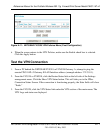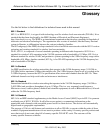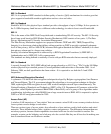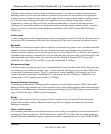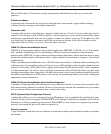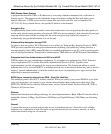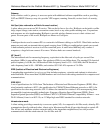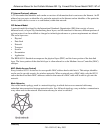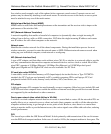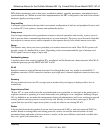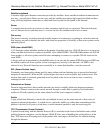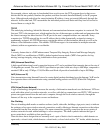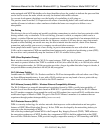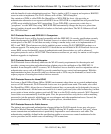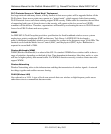
Reference Manual for the ProSafe Wireless 802.11g Firewall/Print Server Model FWG114P v2
Glossary -7
201-10301-02, May 2005
IP (Internet Protocol) address
A 32-bit number that identifies each sender or receiver of information that is sent across the Internet. An IP
address has two parts: an identifier of a particular network on the Internet and an identifier of the particular
device (which can be a server or a workstation) within that network.
ISO Network Model
A network model developed by the International Standards Organization (ISO) that consists of seven
different levels, or layers. By standardizing these layers, and the interfaces in between, different portions of
a given protocol can be modified or changed as technologies advance or systems requirements are altered.
The seven layers are:
• Physical
• Data Link
•Network
• Transport
• Session
• Presentation
• Application
The IEEE 802.11 Standard encompasses the physical layer (PHY) and the lower portion of the data link
layer. The lower portion of the data link layer is often referred to as the Medium Access Controller (MAC)
sublayer.
MAC (Media Access Control)
Every wireless 802.11 device has its own specific MAC address hard-coded into it. This unique identifier
can be used to provide security for wireless networks. When a network uses a MAC table, only the 802.11
radios that have had their MAC addresses added to that network's MAC table will be able to get onto the
network.
Mesh Networks
Also called mesh topology, mesh is a network topology in which devices are connected with many
redundant interconnections between network nodes. In a full mesh topology every node has a connection to
every other node in the network. Mesh networks may be wired or wireless.



